Fujifilm MV-1 Repair (the worst camera ever made)
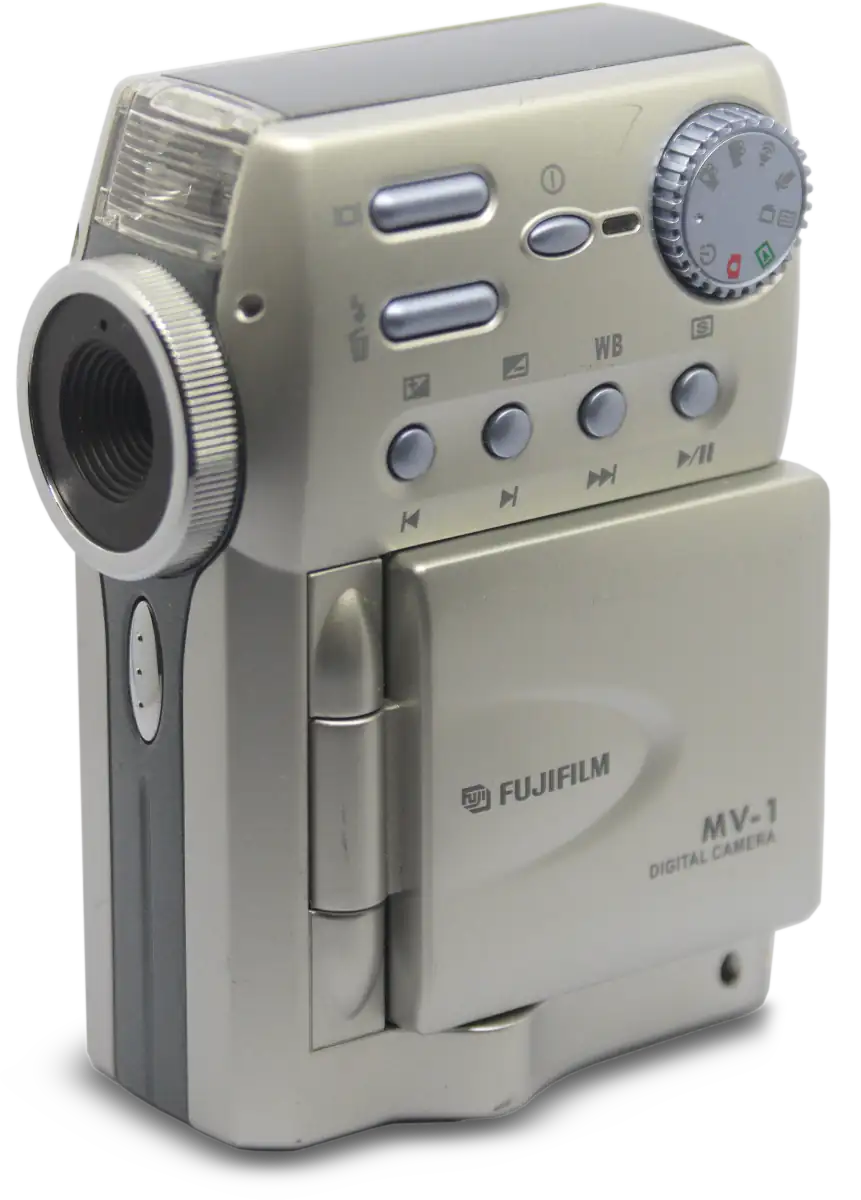 Today, I'm taking a look at a camera produced in 2003 by Fujifilm, seemingly exclusively for the Italian market. Apparently, it was offered as a "reward" for collecting points from a well-known petrol station chain. However, it wasn't entirely free; you also had to shell out 80 euros, which would be around 120 euros in today's money (2025).
Today, I'm taking a look at a camera produced in 2003 by Fujifilm, seemingly exclusively for the Italian market. Apparently, it was offered as a "reward" for collecting points from a well-known petrol station chain. However, it wasn't entirely free; you also had to shell out 80 euros, which would be around 120 euros in today's money (2025).It appears to be quite rare globally, except here in Italy. I've actually stumbled upon a few of these at the monthly flea markets in Udine, buried in dusty boxes filled with unwanted junk. Of course, I always hold out hope of finding a hidden gem amongst the clutter.
Just by looking at it, I immediately suspected it wasn't anything special. The lens looks like it belongs on a cheap webcam, and while it appears to have a manual focus ring, it's purely for show. It's also incredibly lightweight, and holding it gives you a real sense of how flimsy it is.
However, I must admit, it piqued my curiosity. Its slender design and the fact that the only viewfinder is a flip-out screen give it more of a camcorder vibe than a traditional camera. Plus, it runs on 4 AA batteries, which I have plenty of rechargeable ones at home.
I picked it up for a mere 5 euros.
My first test was to record a short video, and I immediately encountered an issue: the paltry 16 megabytes of internal memory allows for a maximum of about two and a half minutes of footage. The camera does accept SmartMedia cards for extra storage, a format I’d totally forgotten about. However, the largest capacity you’d usually find for these cards was 128 megabytes, meaning you’d still be limited to around 20 minutes of video. I checked online, but they cost significantly more than the camera itself – calling the prices crazy would be an understatement – so I decided it wasn’t worth the investment, especially after seeing how bad the video quality was.
The quality is so poor that I think it was below average even for 2003. Back then, there were already some pretty decent compact digital cameras on the market, like the Canon Powershot A80. As for video, the maximum resolution is 320x240 pixels. With a good video codec, you could potentially achieve some interesting lo-fi, VHS-style footage at this resolution. But this is way below VHS quality; it’s simply unwatchable.
Unfortunately, the videos are recorded using the MJPG codec, which compresses each individual frame as a JPG image, completely ignoring motion and the differences between consecutive frames. Given the limited memory, Fujifilm likely opted for the lowest possible JPG quality setting to save space.
When it comes to still photos, the situation is slightly better. The maximum resolution is 1600 x 1200 pixels (2 megapixels, in a 4:3 aspect ratio).
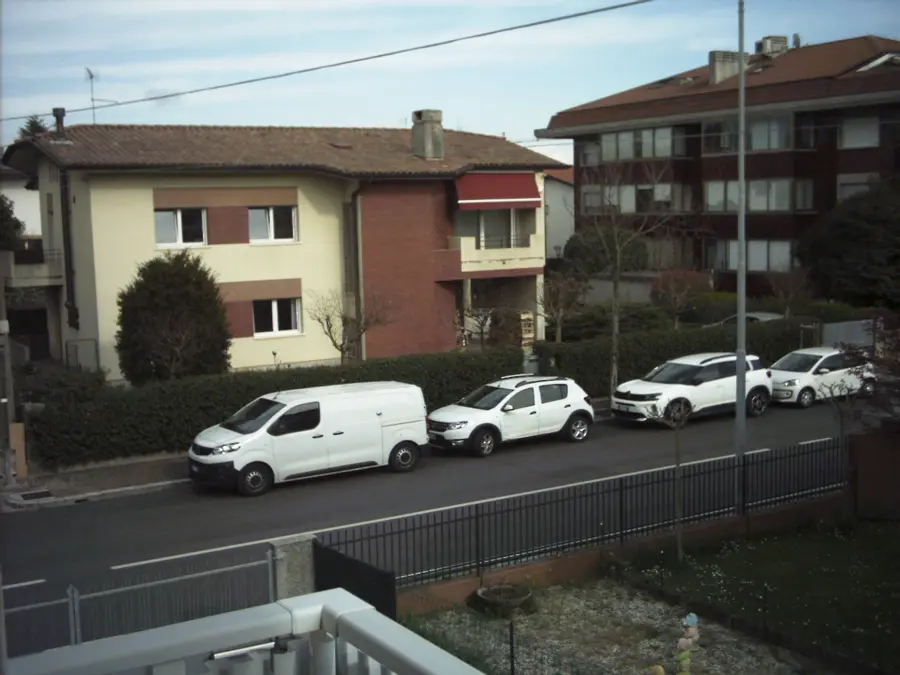
Again, the quality isn’t what you’d expect from a 2003 product – it’s probably more like something from the late 90s – but at least the photos are passable.
Back to the video, besides the dreadful video quality, two things stand out: a very annoying background hum in the audio (you can hear it if you unmute the video above) and an incredibly low frame rate (fps). Regarding the fps, I’m not entirely sure if it’s a fault with my unit or if it was designed that way, but the background noise definitely points to a defect.
I’m not sure why I put myself through this sometimes, but I decided to try and fix it, setting myself a one-hour time limit. Here’s a peek at what’s inside.
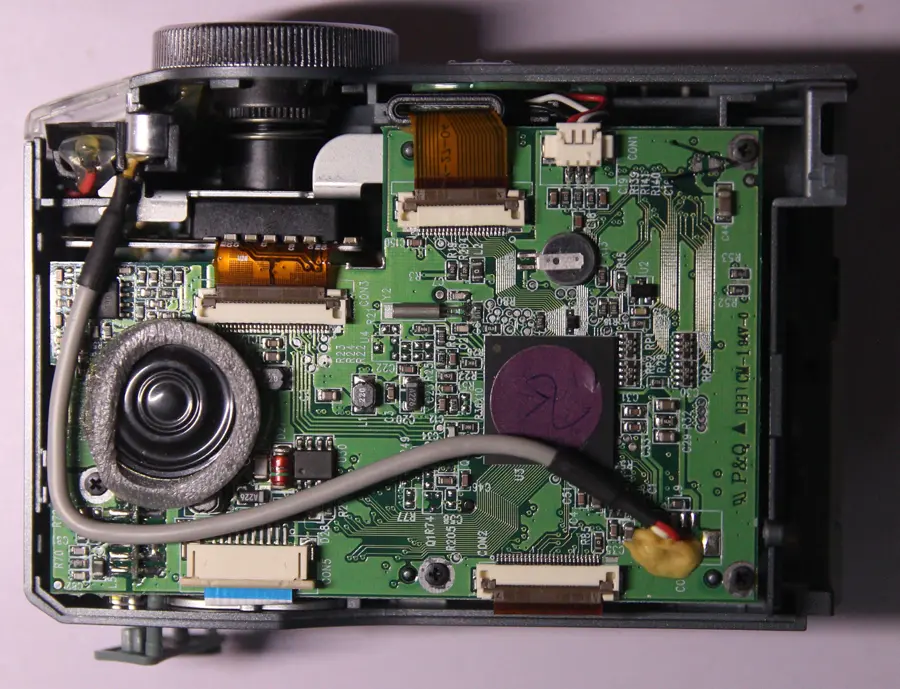
On this side, you can spot the microcontroller, hidden under a purple circular sticker, the CMOS battery, a small speaker, and the electret microphone.
Let’s take a look at the other side:
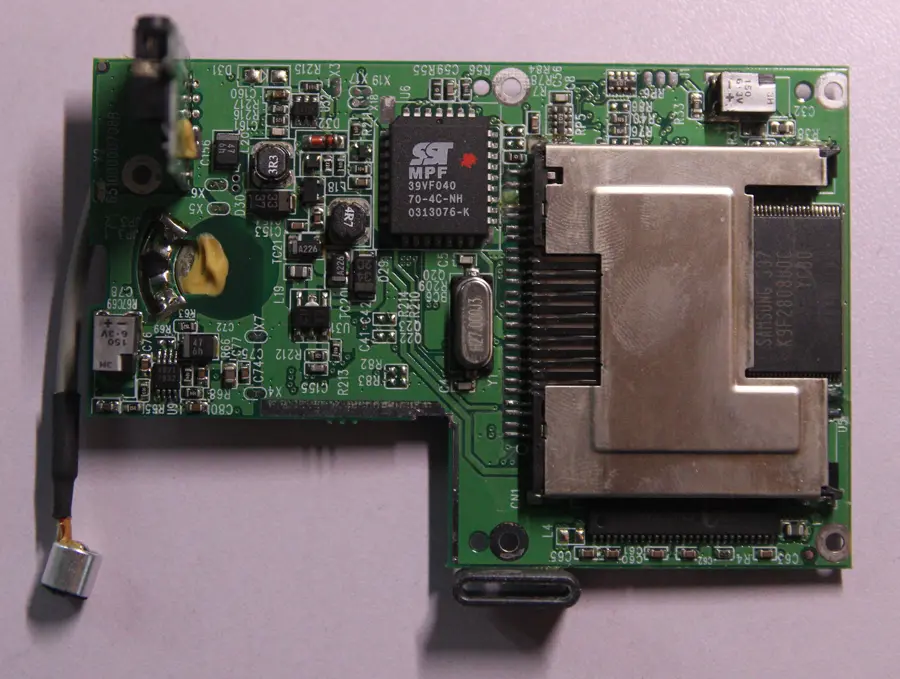
Here, we can see the quartz oscillator for the clock, an EEPROM chip likely containing the firmware, and, beneath the memory card slot, a 16-megabyte memory chip. On this side, I also noticed the two prime suspects: a couple of 150µF electrolytic capacitors (bottom left and top right).
I tried measuring them in-circuit with my ESR meter, but I got no reading. At this point, I decided to desolder one and test it with my component tester.

As anticipated, this capacitor had a very high ESR (9.8 ohms) and a capacitance lower than its rating (around 100uF compared to the stated 150uF). I tested the other one, and it was practically identical. Both needed replacing.
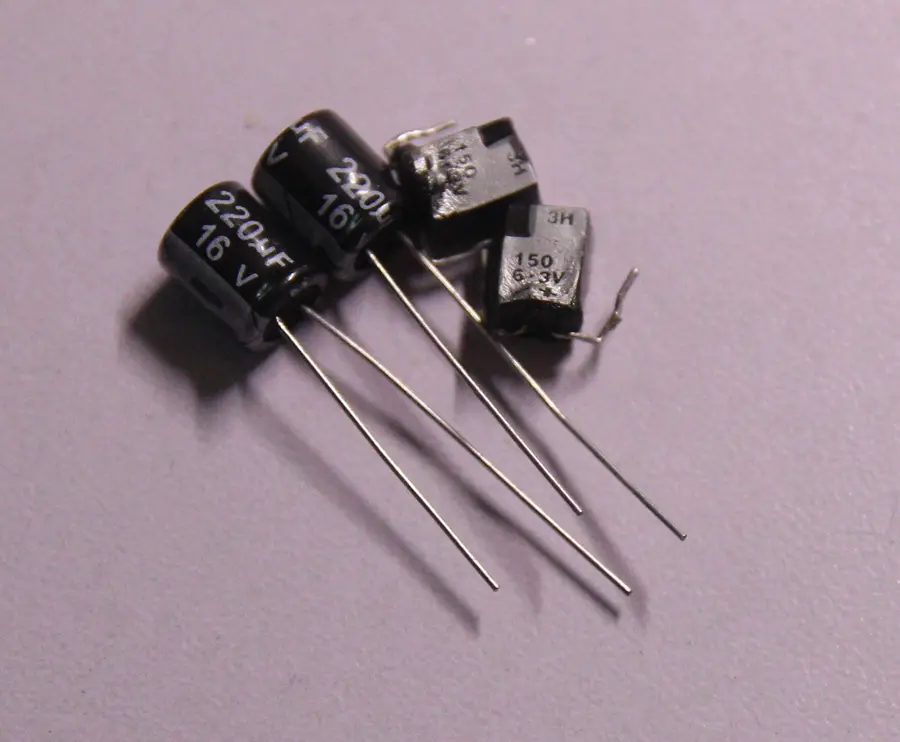 I didn't have any surface-mount capacitors or any with the exact same value and voltage, but I found a couple with slightly higher specs (220uF/16V), which should work just fine.
I didn't have any surface-mount capacitors or any with the exact same value and voltage, but I found a couple with slightly higher specs (220uF/16V), which should work just fine.Here are the new capacitors soldered onto the board.
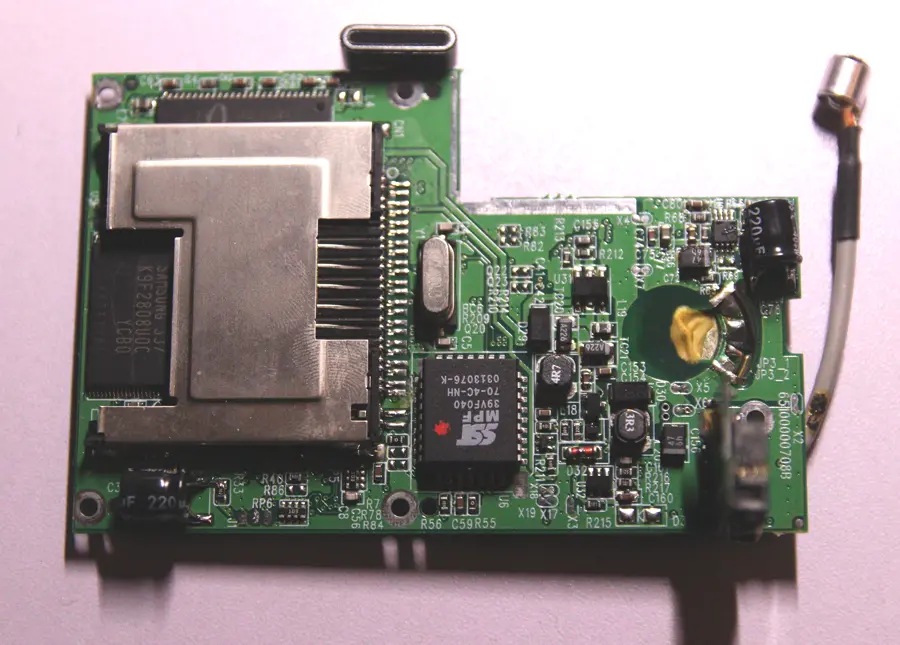
Indeed, this fixed the audio issue, which is now noticeably cleaner. However, it didn’t resolve the low frame rate, which remains at a dismal 7 frames per second. I suspect this was a deliberate design choice to minimize video file sizes.
While I had it open, I was curious to see which microcontroller was hiding under that sticker.
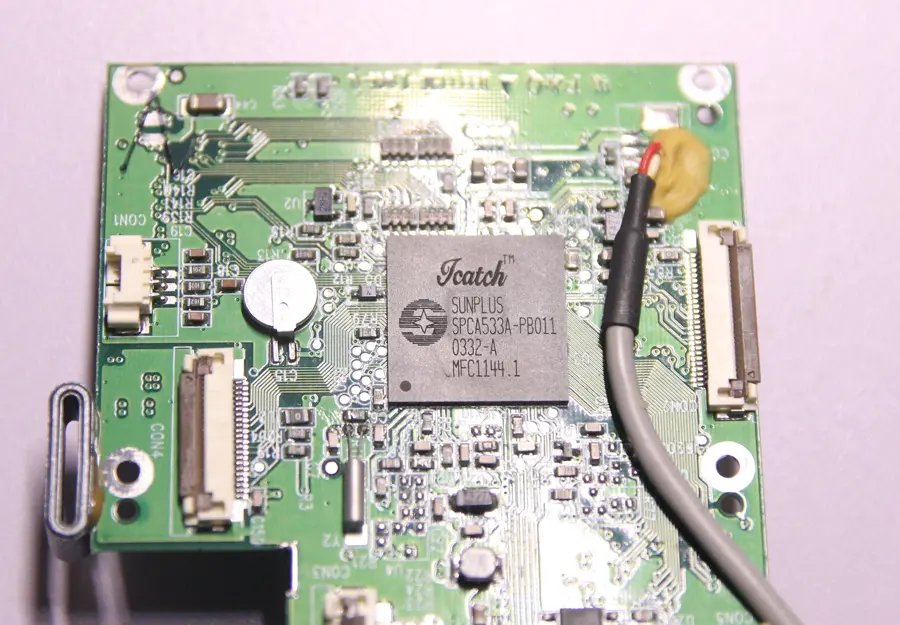
It turned out to be a Icatch SUNPLUS SPCA533A. A quick search online revealed the complete datasheet for this microcontroller. It has a wide array of features and potential that this camera doesn’t fully utilize, particularly the ability to capture video of a much higher quality than what it currently produces. If I wanted to, I could have dumped the EEPROM and tried tweaking some parameters to unlock more of this camera’s capabilities. However, there are too many fundamental limitations to consider, particularly the very small memory, so I decided to stop there and not spend any more time on it.
Conclusions
When designing this camera, Fujifilm's decisions were likely driven by a desire to cut costs to the bone, given its target market was a small one (Italy) and aimed at people who weren't particularly interested in photography or video making, but simply wanted to capture some basic memories during their travels or events. In my opinion, even for these basic purposes, the camera falls short. Beyond the software issues I mentioned, it also suffers from a fixed-focus lens, a truly awful screen (completely unusable in bright sunlight), and the absence of an optical viewfinder. And let's not forget the rather bizarre ergonomics for a camera, shaped like a camcorder with the shutter button awkwardly placed beneath the lens.There are some people online trying to sell these at inflated prices, capitalizing on their rarity. Don't be fooled; it's not even worth the 5 euros I paid for it.
It has been submitted and will be reviewed before being published.